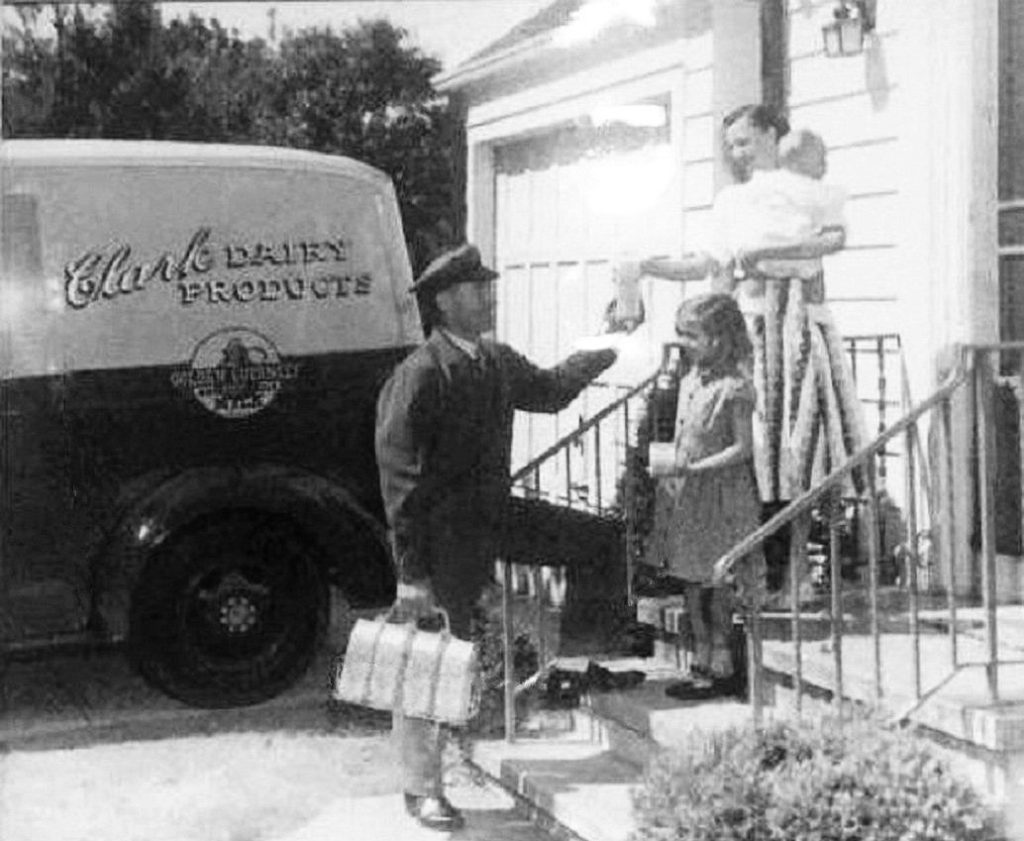By Dan Shine
Voice Columnist

Dairy Farming in West Haven
By 1900, West Farms had become a borough of Orange, and was now named West Haven; it would not become a separate entity until 1921. And also by 1900, people had been farming the area for over 250 years! But by now, West Haven was no longer the breadbasket of New Haven, and West Haven farmers now shared their community with those who labored in the factories and shipyards, onboard ships, and also those who supported the operation of the Savin Rock amusement area.
During the first decades of the Twentieth Century, a trip down the Milford Turnpike (what we today know as the Boston Post Road), was either a dusty one or a muddy one, since the road was not yet paved. As one left its intersection with Campbell Avenue, heading west, one would pass the farms of the Buckholtzes, the Treats, Wrights, Hoffmans and many more. Where the Post Road dipped, just to the west of today’s Ardale Street, the Derby railroad line crossed under the road, and ran out to the planned community of Tyler City and beyond it to Derby. All along the Turnpike, cows, horses and chickens could be seen everywhere, along with farmhouses, barns, cornfields and hay meadows.
Generally speaking, electricity and mechanization were slow to make their way to rural areas and to farming life, so most of the farmers’ work was still done by hand: haying, milking, churning of butter, and creation of cheese all involved the farmer and his family.
Further down the Milford Turnpike, every morning, farmer John Forbes drove his herd of cows from the Milford Turnpike, down Bull Hill Lane to Platt Avenue, where they would graze on the salt hay in the tidal marshes. What little traffic there was along the way would have to wait their turn until the cows had passed by and the road was clear.
And in those times, West Haven still had a dairy farm right across from the Green. The Oak Hill Dairy was operated by John Frederick Johnson, from his home on 74 Church Street. Entrances to the farm were therefore both on Main Street and Church Street, as the farm passed behind the First Church parsonage and the dwellings on either side of it. In addition to dairying, the farm had a vineyard, a truck garden, the barn, stables and a chicken house. This farm dated back to 1845. Each day, farmer Johnson would drive his herd over to his meadows on Wagner Place, where they would graze; then, each night they would return to the barn. He bottled the milk at 74 Church Street, in a rear extension to the house. Pasteurizing and homogenizing were not done at this time, so the entire dairying process took up very little space.
Ultimately, as the character of West Haven changed, farmer Johnson was asked to move his dairy, and so the entire operation was transported out to the Woodbridge-Seymour line, and became known as the Bladen Valley Farm.
Dairy farmers sold their milk to the big dairies, which were plentiful in those days: according to the late Harriet North, Clark’s Dairy, Smith’s Dairy, Fannings and Alspaugh’s were well known in the area. At first, they delivered their milk from horse-drawn wagons. Then later on, milk trucks took their place, bringing glass bottles of milk to the households of West Haven.
Finally, it became clear that West Haven’s time as an agricultural and farming community was coming to an end. By 1941, records still indicated that cows grazed in the meadows bounded by Morgan Lane, Woodmont Road, Jones Hill Road and Benham Hill Road, but for certain their numbers were dwindling.
But out on Jones Hill Road at the Hubbard farm and the Hebb farm, cows were still being milked well into the 1960s. Your Historian recalls that by 1960, the last cows he remembers seeing in town were grazing in a meadow along Island Lane. Today, the only possible West Haven cows he is aware of are out at Latella’s farm on Prindle Hill Road.
And so, as Walter Cronkite used to say, “That’s the way it is.”
Next to my condo on bull Hill Lane, there is a church that operates a small farm. Every so often, I go over to look at the farm’s progress during the growing season. It produces a variety of vegetables & I believe the food is donated to a food bank.